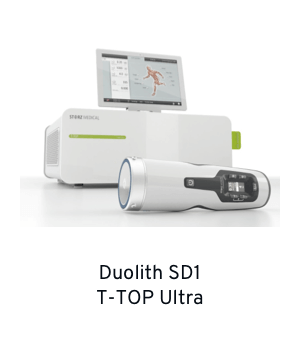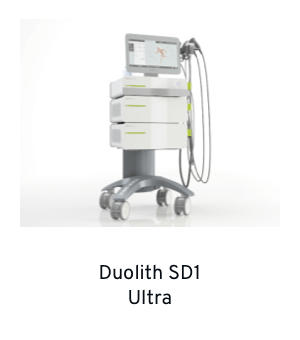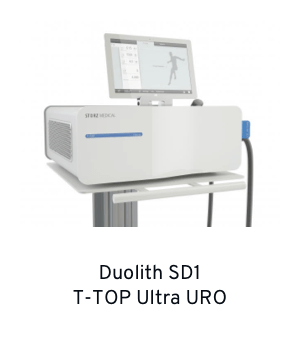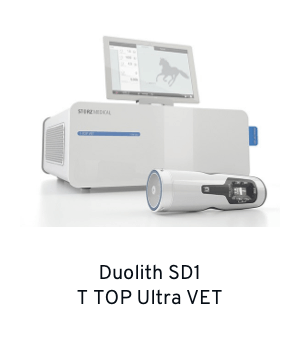NEUROLITH
Transcranial Pulse Stimulation
NEUROLITH Transcranial Pulse Stimulation (TPS®) is a new state of the art .therapy for Alzheimer’s Disease and mild to moderate dementia.
More than 850,000 people in the UK are living with Alzheimer’s and dementia and this number is growing fast thanks to an ageing population as well as other factors. It’s believed that 1 in 3 people born now will develop this disease.

System at a Glance
- BodyTrack® software
- 3D Camera with patient and handpiece position detection
- Calibration probe & tracking glasses with markers
- TPS handpiece with markers – ergonomic design to minimize hand fatigue
Quick and effective easy treatments
Current research suggests six 30 minute sessions over 2 weeks may improve Alzheimer’s and mild to moderate dementia by 10 points on the CERAD scale.
Stimulates Deep Cerebral Regions of the Brain
NEUROLITH® uses Transcranial Pulse Stimulation (TPS®) technology, consisting of short acoustic pulses with an ultrasound frequency range that permits a well-focused stimulation of the brain at a depth of up to 8 cm. NEUROLITH® received medical CE in December 2018.
Improved Cognitive Abilities and Slowed Decline
Studies show that transcranial pulse stimulation may temporarily maintain the cognitive abilities of patients with mild to moderate Alzheimer’s disease, as well as slow decline over time. Data shows that the improvements last for at least 3 months after a course of TPS®. TPS® on average improved cognition by 10 points on the CERAD scale.
Patients and close relatives also reported noticeable improvements in memory and verbal communication, which subsequently and indirectly led to an increase in social interaction. Some patients even reported an improved sense of direction that enabled them to do their daily tasks independently and safely find their way home afterwards.
How Does it Improve Symptoms of Alzheimer’s Disease?
TPS® induces mechanotransduction, stimulating growth factors, primarily VEGF3,4. This not only improves cerebral blood flow, but also promotes the formation of new blood vessels (angiogenesis) and nerve regeneration. In addition it causes the release of nitric oxide (NO)5, which leads to direct vasodilation and improved blood circulation. Transcranial Pulse Stimulation (TPS®) enables targeted stimulation of the cerebral regions.
Biological Effects
- Mechanotransduction(6)
- Increase in cell permeability (7)
- Stimulation of mechanosensitive ion channels (6)
- Release of nitric oxide (NO)5, which leads to vasodilation, increased metabolic activity and angiogenesis and has an anti-inflammatory effect
- Stimulation of vascular growth factors (VEGF)(3,4)
- Stimulation of BDNF8
- Migration and differentiation of stem cells (4,6)


Transcranial pulse stimulation stimulates deep cerebral regions, targeting as deep as 8 cm into the brain tissue
Is Transcranial Pulse Stimulation (TPS®) Safe?
Neurolith TPS® is very safe, thanks to the short duration of the TPS® stimulation, heating of the tissue is prevented. TPS® is performed directly through the skull, non-invasively. The patient remains awake during the session in a comfortable seated position. More than 1800 sessions have been performed using the NEUROLITH® TPS system.
The Advantages of TPS®
Pulses stimulate deep cerebral regions of the brain up to 8cm, these are applied directly to the required areas for maximum clinical effectiveness. TPS® has been shown both to significantly improve CERAD test performance and to reduce Beck’s depression index in patients with mild to moderate dementia.
- 30 minutes per session in outpatient clinics
- 6 sessions over 2 weeks
- Painless
- No side effects
- Personalised therapy based on MRI data
- Adjuvant cognitive training not required
- Non-invasive
- No need to shave the hair
- The patient can remain mobile in a comfortable seated position during sessions
- Focused stimulation of deep cerebral regions
- Personalised 3D visualisation of patient’s head
- 3D infrared camera system for precise cerebral tracking
- USB interface for MRI data import
- Patient database

BodyTrack® – Live tracking
The BodyTrack® live tracking technology enables automatic visualisation of the treated regions. Personalised patient MRI data allows specific characteristics of the patient’s brain to be taken into account. Every time the handpiece position changes, the visualisation of the target regions in the loaded MRI scans is automatically updated, energy is then applied exactly where is needed, highlighted in colour for ease of use.

The advantages of the TPS® BodyTrack® software
- Uses the patient’s own personalised MRI data
- Visualisation of MRI data in 3 planes (axial, coronal, sagittal)
- Coloured visualisation of the brain region
- Real-time visualisation of TPS® pulse distribution
- Continuous visualisation and documentation of the energy applied and of treatment progress
Publications
Effectiveness Of Transcranial Pulse Stimulation In Alzheimer’s Treatment
Transcranial Pulse Stimulation in Patients with Alzheimer’s disease
Transcranial Ultrasound Pulse Stimulation Reduces Cortical Atrophy in Alzheimer’s Patients
First evidence of long-term effects of transcranial pulse stimulation (TPS) on the human brain
TPS as a Treatment for Neurodegenerative Diseases – Treating the Brain at the Speed of Sound
Significant reduction of Alzheimer’s disease symptoms by transcranial pulse stimulation, TPS
Transcranial pulse stimulation (TPS) improves depression in AD patients
Pilot clinical and EEG-biomarker results of transcranial pulse stimulation in Alzheimer’s disease
Transcranial focused ultrasound modulates the activity of primary somatosensory cortex in humans
Image-guided transcranial focused ultrasound stimulates human primary somatosensory cortex
Cognitive Effects and Autonomic Responses to Transcranial Pulsed Current Stimulation




